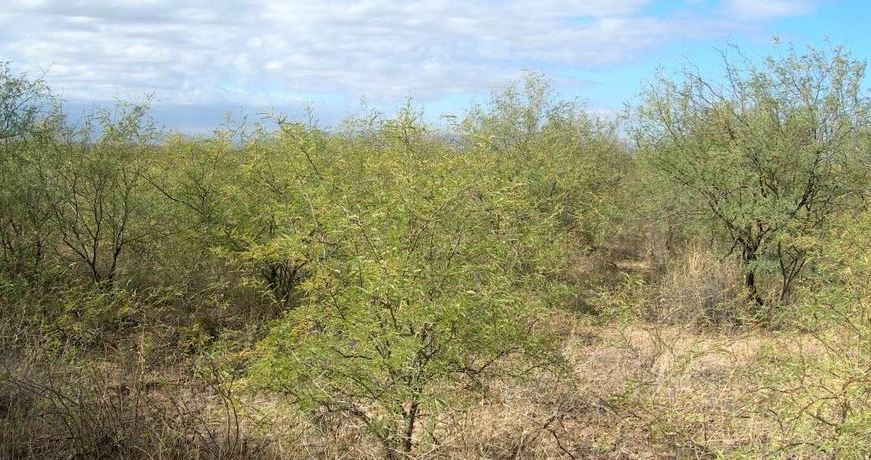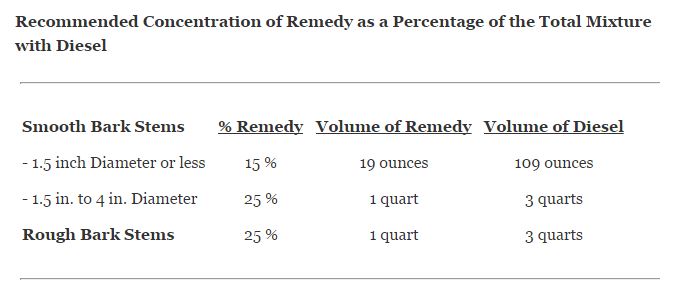Managing Mesquite and Other Brush to Improve Wildlife Habitat
Regular brush control is a way of life in Texas. We are blessed with a variety of brush species, but control is often warranted to maintain openings within habitat. These openings help provide many of the foods, particularly forbs, that animals such as white-tailed deer, bobwhite quail, doves and numerous other seed-eating species readily consume. Proper land through well planned brush management helps maintain good habitat and greatly improves hunting for deer and other game species. After all, it’s difficult to hunt things you can see!
One of the best ways to control mesquite and other overabundant brush species is through basal spraying. Spraying the stem bases of individual plants can be a very effective and economical way to acquire selective control of various brush species across Texas. This method permits treatment throughout the year. Foliar treatments also work, but are much more effective during the growth stage. However, often times spring food plots are being planted or other wildlife management activities are happening during the early part of the growth season. Basal treatment gives landowners and managers flexibility with regard to timing.
Mesquite is one of the most invasive brush species across Texas. Good results have been obtained from applications throughout the year, however, best and most consistent results have come from summer season applications. Best results are also realized when applications are limited to younger plants possessing basal stems with smooth, thinner bark that has not yet matured into a thicker rougher “corky” layer.

Application for Brush Control
The most efficient way to apply the herbicides for brush management and control is with a backpack sprayer, although a garden pump-up sprayer or any type of hand sprayer may be used. Using a sprayer nozzle with a small orifice can reduce total quantity of spray applied by as much as 80 percent over standard nozzles. Make sure to adjust the nozzle tip to deliver a narrow, cone-shaped mist, and apply the mixture lightly and evenly to each basal stem from the ground line up to about one foot high. This ensures you get the best application possible.
Make sure that the spray mixture completely wraps around each stem for the entire 12 inches up before moving on. Just spray to cover all around the stem, as spraying to the point of puddling is wasteful and unnecessary.
The most commonly recommended herbicide mixture for basal stem applications is a Remedy and diesel fuel oil combination. The diesel serves as a carrier and penetrating agent to assist with herbicide absorption through the bark. The amount of Remedy to use in the mixture depends on the size and age of the brush, whether or not it has rough bark. This combination is widely used for brush control for wildlife and habitat management in Texas. The table below offers recommended percentages of herbicide and volumes of both to make one gallon of mixture:

If, for example, you are only mixing one gallon (128 fluid ounces = one gallon) of total mixture with diesel. Pour the required amount of herbicide into a mixing container and then bring it to total volume with the diesel to give the proper percentage concentration of herbicide desired.
When Basal Spraying for Maintaining Open Habitat
- Always follow herbicide label directions.
- Treatment costs escalate rapidly as plant densities or stem numbers per plant increase. Act early and save money and time.
- Multiple-stemmed plants or rough-barked plants are more difficult to control. Again, the earlier you can control these species the better.
- Do not spray when stems are wet as this will impact absorption by brush.
- Agitate the spray solution until well mixed before spraying to ensure the active ingredient is distributed.
- Dense grass around the stem bases reduces application and effectiveness of brush control. Consider application as soon as temperatures are appropriate each year.